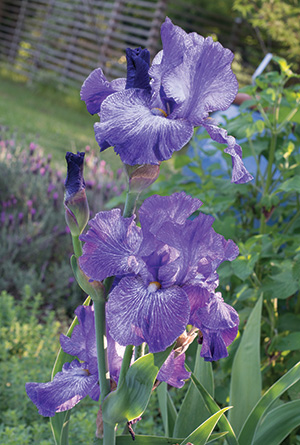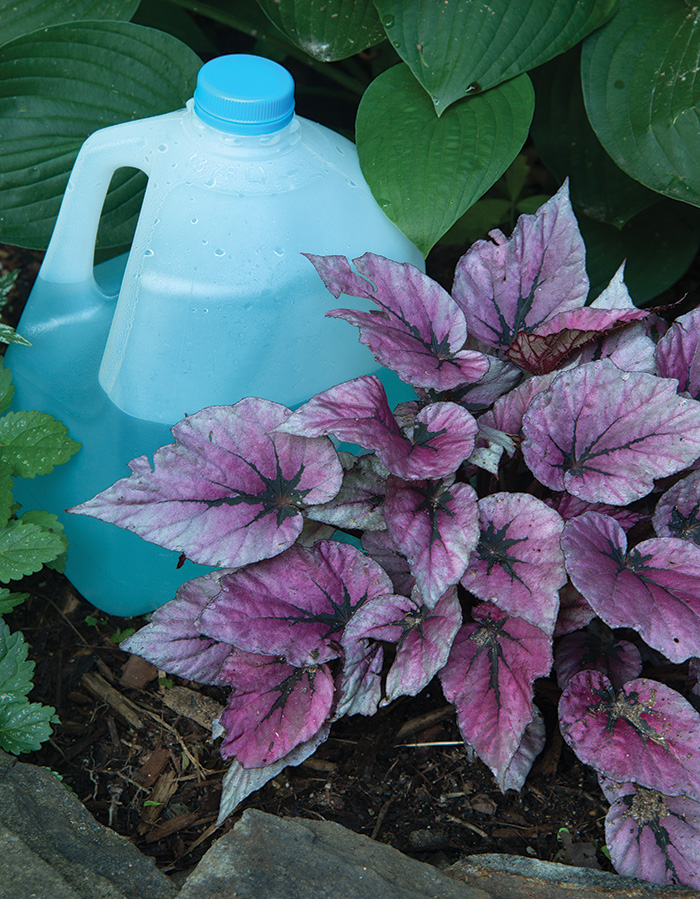August can be a tough month for the garden — it’s always scorching, and when rains do come, they are normally in the form of short showers not enough to completely relieve plants over the long, hot haul. That is why additional waterings are usually needed during these simmering dog days of summer.
Instead of reaching for the water hose and simply spraying anything green and growing in sight, consider these watering tips to irrigate your pride-and-joy plants more efficiently.
Holey Water. Soaker hoses are great for watering plants, but if you don’t have one and do have an old hose that has given you nothing but trouble with its kinks, knots and curls, take revenge on it by stabbing small holes about 3 inches apart along the length of the hose with an ice pick or nail, and then literally cover up the dastardly deed with cloth tape wrapped over each puncture. Next, cap the end, weave the wounded hose among a grouping of plants and turn the water on to just a trickle to slowly soak moisture into the soil.
Milk Made. For a one-on-one approach to watering, plastic gallon milk jugs can be used to give plants beyond the reach of the garden hose thorough soil soakings. Simply poke a very small hole in the bottom of an empty jug, fill it with water and place the container next to the parched plant. The tiny hole will leak the water out slowly, allowing it to saturate down, down, down into the soil. If you put the cap back on the jug loosely, it will create a slight vacuum that will slow the drip down even more.
You can even add a beneficial jolt to this jug juice by occasionally mixing in a diluted shot of water-soluble fertilizer.
Roll Out the Barrel. Rain barrels used to be the fashionable rage with in-style gardeners, but their popularity has dipped in recent years. Too bad — these water collectors should really be considered garden necessities rather than trendy accessories. A moderate 30-minute rain shower can easily fill a 65-gallon rain barrel attached to a gutter downspout, which for me, is enough to provide a large portion of my favorite greenery with plenty of free, non-fluoride, chlorine-free, pH neutral, oxygenated water that plants love, for almost a week.
Pampered Plants. This summer, to cut down on the frequency of watering potted plants, which encourages shallow root systems and leaches nutrients from the soil, place a disposable baby diaper (such as Pampers) with its plastic side down about 6 to 12 inches into the soil, depending on the size of the plant. Make a few cuts on the inside of the diaper to expose the polymer flakes, which can retain up to 300 times their weight in water, cover with dirt and then add plants to the container. As the flakes are quite capable at retaining water, so too are they very good at slowly, efficiently releasing vital moisture to plant roots during the hot, hazy days of a southern growing season.
If baby diapers in containers don’t appeal to you, consider mixing into the pot soil similar plant-oriented, moisture-retaining products that can be found at your local, friendly garden center, made from SAP (Super Absorbent Polymers).

Bearded irises need well-drained soil and at least six hours of sunlight per day. A full day of sun is even better.
If your bearded irises (Iris germanica) had a poor showing this year, it could be they were too crowded. These beauties need to be dug up and divided every three to four years to keep their flower power in full force. Now is a good time to do the deed.
Once the rhizome clumps are dug out of the ground, rinse them with water and cut or gently pull off any young rhizomes. An ideal rhizome for replanting will be about as thick as your thumb and have roots as well as a few leaf blades attached. Snip the foliage back to about 6 inches and then replant the ‘zomes with their tops slightly above ground in a well-prepared bed.
To Do in the Garden
August
- It’s cool-season veggie planting time! Beets, broccoli, cabbage, carrots, cauliflower, collards, kale, lettuce, mustard, onions, radishes, spinach and turnips can all be started in the garden now.
- Continue clipping off spent rose blooms so the plants won’t waste energy producing rose hips. The exception to this rule is rugosa roses, many of which produce brightly colored rose hips that persist with their prettiness well into the winter without draining the plants’ power to produce a bevy of bright, new blooms the following spring.
- If you have a fish aquarium, you also have an all-natural source of rich fertilizer, so whenever you change part of the water in the tank, pour it around some of your favorite plants.
- Spider mites become very active during hot, dry weather. One sure sign of their presence is a washed, mottled appearance of leaves as a result of these tiny pests sucking out the plant’s juices. Effectively putting the lights out on their party can be had by thoroughly drenching foliage with either horticultural oil or insecticidal soap.
- Cut mature blooms of Queen Anne’s lace, place them on a screen, set them in the attic or other warm, dry place and, come Christmas, you will have all-natural “snowflakes” to add as decorations on your tree.
- Resist the temptation to deeply cultivate plant beds at this time, as it will disturb plant roots and increase ground moisture loss through evaporation.
- If showers are few and far between this month, keep rhododendrons and camellias high on the “must water once a week” chore list because they are now starting to develop buds for next year’s flower show.
- Speaking of water, continue to top off the bird bath for your feathered garden friends.







